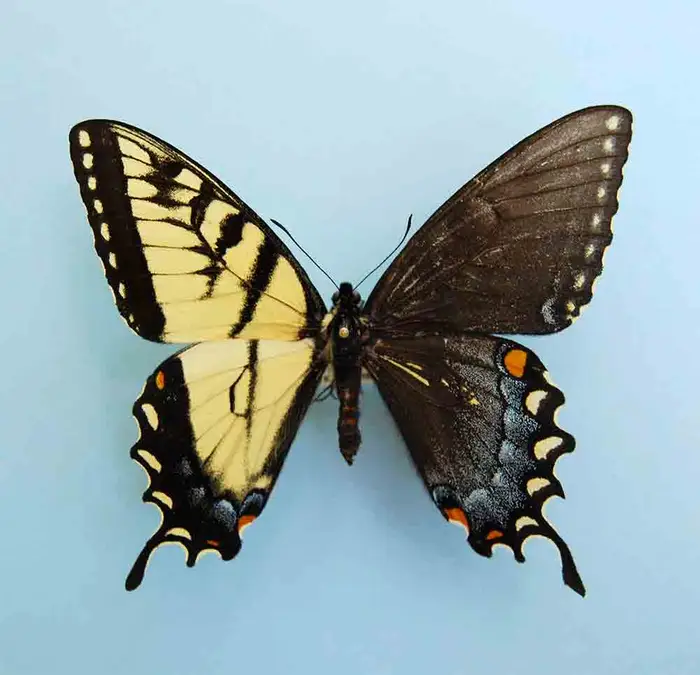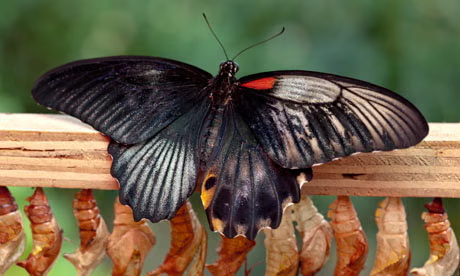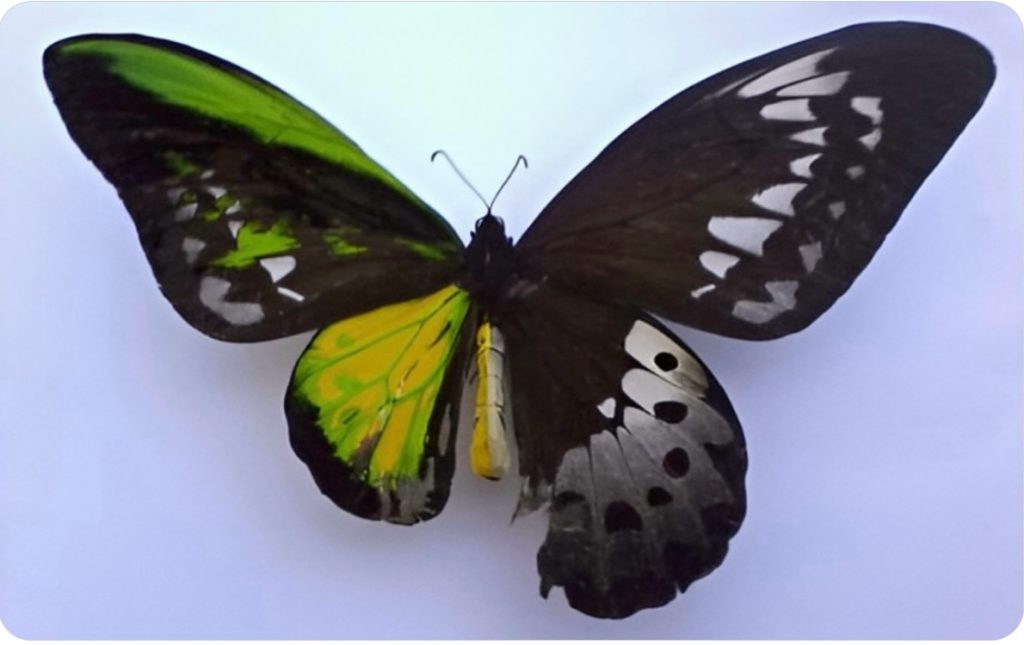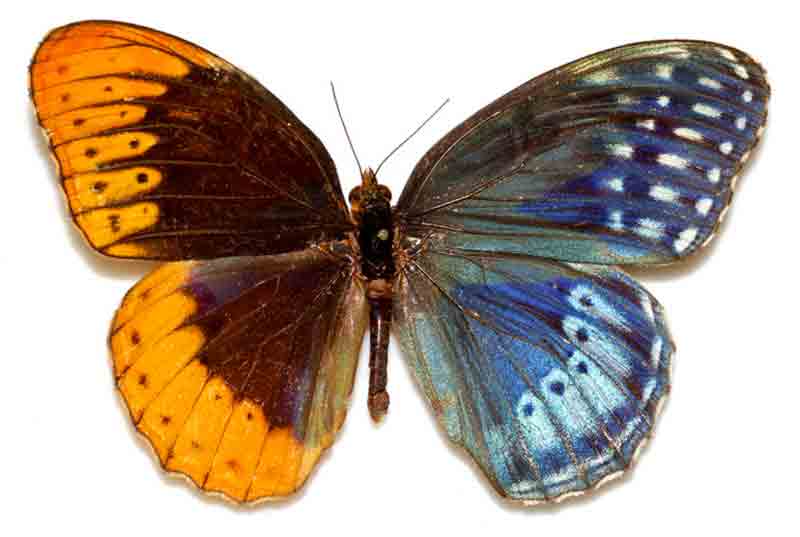How a Rare Bilateral Gynandromorph Butterfly Reveals Nature’s Most Fascinating Secrets
Every once in a while, nature reveals something so unusual, so visually striking, that it feels like a secret you were never meant to see. One of these rare wonders is called a bilateral gynandromorph, a phenomenon where an animal develops half male and half female traits, split perfectly down the middle of its body. For most people, the first time they encounter this is through photographs of butterflies that look as though an invisible line has divided them in two, painting one side with male colors and the other with female patterns. The effect is breathtaking, almost as if an artist decided to experiment with symmetry and contrast on the canvas of a living creature.

In butterflies, this occurs because of an error very early in development, during the first divisions of the fertilized egg. Normally, chromosomes separate cleanly, and cells know whether they are developing into male or female tissue. But in the case of a gynandromorph, the chromosomes don’t divide the way they should, leading half of the body to follow one genetic path and the other half to follow another. What emerges from this genetic accident is a single butterfly with two identities, joined together seamlessly yet visibly different. It is not something anyone can predict or breed for—it simply happens, rarely and unpredictably, making each case a unique glimpse into the mysteries of biology.

The most striking part of these butterflies is the way their wings tell two stories at once. Male butterflies often have brighter, more vivid colors, evolved to attract mates. Females, on the other hand, are often larger and carry subtler tones that help them blend into their environment and protect themselves while laying eggs. When those two sets of traits end up on the same body, the result is a living patchwork: one side vibrant and bold, the other muted and practical. To see a butterfly like this in the wild is almost unheard of. Most people who study them spend years hoping for such a sight, while many only ever encounter them preserved in museum collections or captured in rare photographs.
But butterflies are not the only creatures where this occurs. Gynandromorphism has been observed in birds, where one half of the animal displays the colorful plumage of a male and the other half the plainer feathers of a female. In some songbirds, this can mean one side sings while the other side does not. In crustaceans like crabs and lobsters, one claw can grow large and strong like a male’s while the other remains smaller, like a female’s. Each case is an opportunity for scientists to learn more about how sex is determined in the animal kingdom, and how bodies follow the instructions of their chromosomes.

For researchers, these creatures are more than curiosities—they are natural experiments that help explain the fundamentals of biology. By studying them, scientists can learn how early errors in cell division shape entire organisms, and how sex-linked traits develop. But for most of us, the wonder is less about the science and more about the sheer beauty of seeing such symmetry in something alive. It challenges our ideas of what is “normal,” reminding us that nature often resists simple categories.
There is also something quietly symbolic about these butterflies. They are rare and fragile, yet in their wings you can read a story about balance, duality, and coexistence. They are not male or female, not one or the other, but both at once. In that sense, they carry a kind of beauty that feels almost poetic, showing that the natural world has space for complexity and imperfection, and that sometimes the most extraordinary things are the ones that fall outside the rules.

When you look at a bilateral gynandromorph butterfly, you see more than a genetic accident. You see a reminder that life is never as rigid as we think it is. It is full of exceptions, surprises, and mysteries that remain unsolved. In their delicate wings, half bright and half subdued, these butterflies carry a secret written in symmetry, a message that nature still has endless stories to tell if we are willing to look closely enough.

Daniel Reed is a curious mind with a passion for breaking down how the world works. With a background in mechanical engineering and digital media, he turns complex ideas into easy-to-understand articles that entertain and inform. From vintage tools and modern tech to viral internet debates and life hacks, Daniel is always on the hunt for the “why” behind the everyday. His goal is simple: make learning feel like scrolling through your favorite feed — addictive, surprising, and fun.
